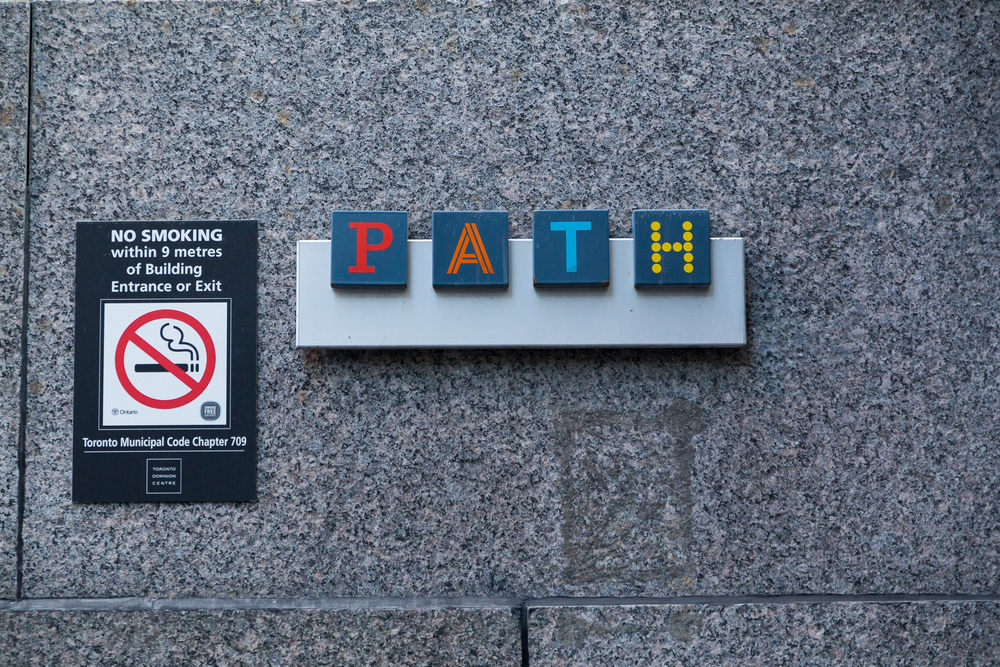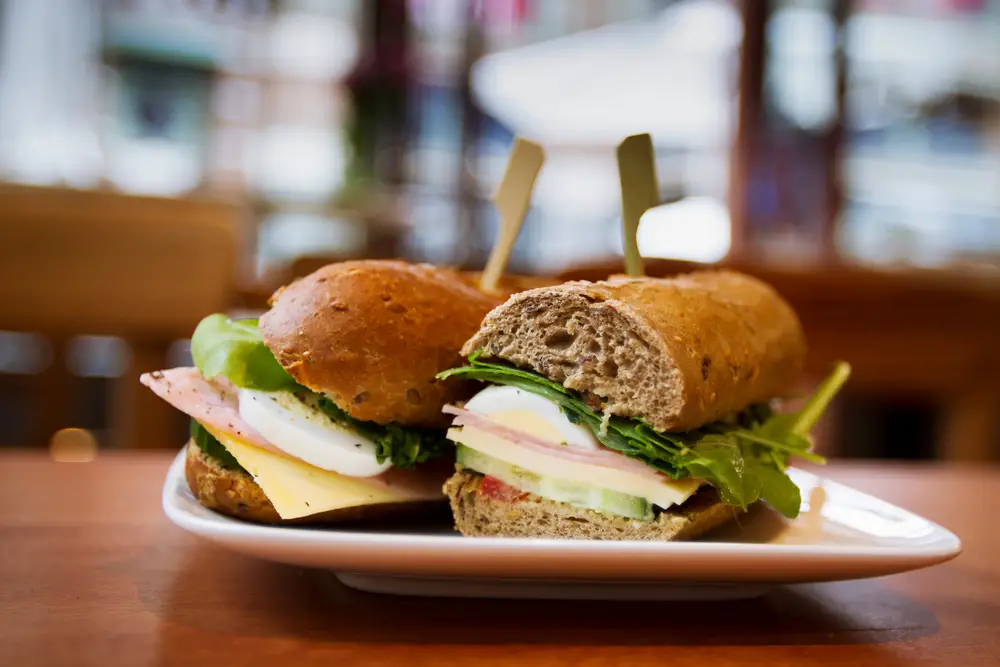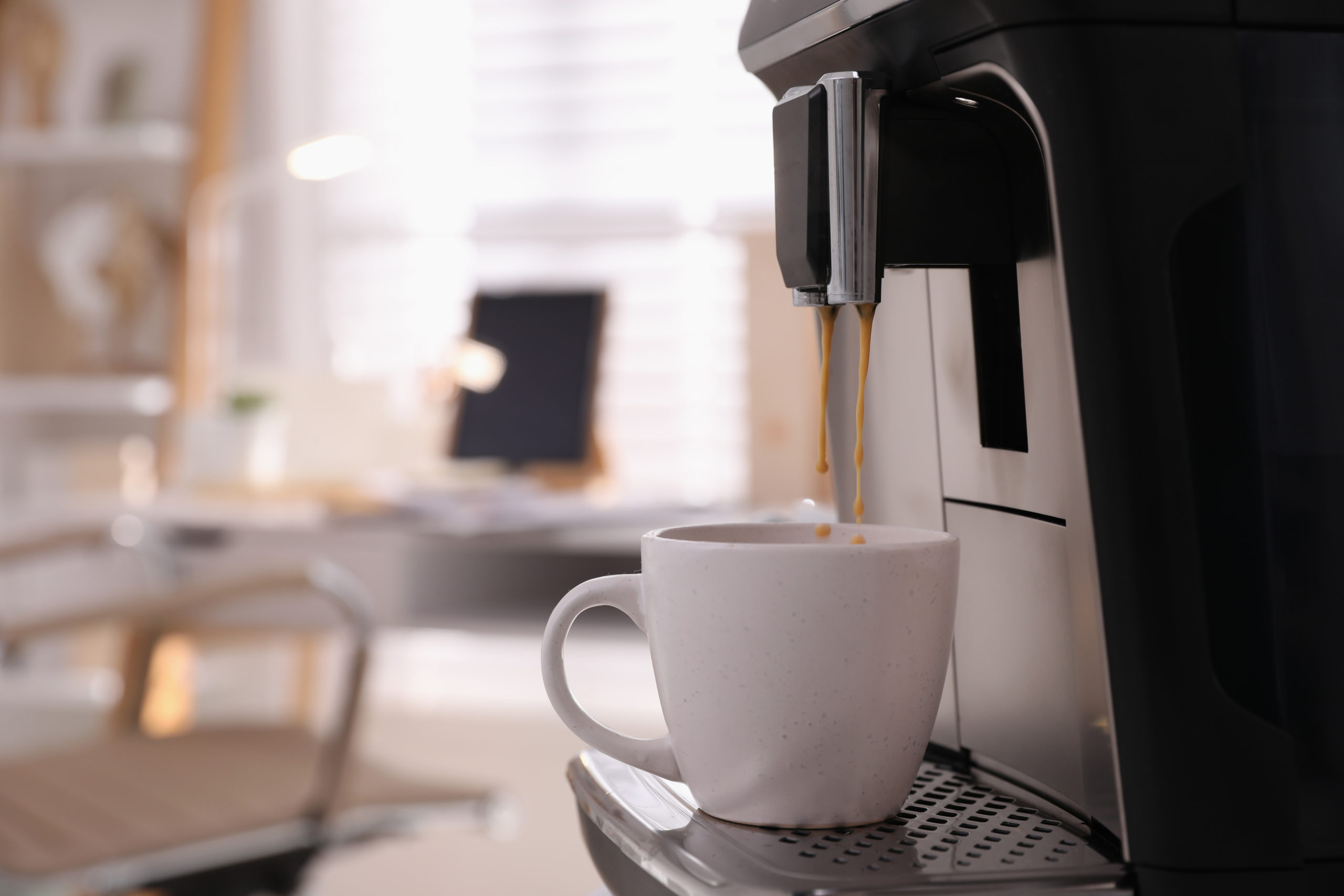From all the research I had done leading up to my move from Toronto to Amsterdam, I had prepared myself for three key differences:
- Better work-life-balance
- More structured work hours
- More direct communication style
I was quite focused on understanding these large, fundamental differences in culture before making the move.
In reality, the first things that I noticed at work (one week into living in Amsterdam) were the small, “normal” everyday behaviours and habits of people in the office.
Though trivial to everyone around me, it immediately reminded me that I was treading in new territory.
Some context to my “Canadian perspective”
In Canada, I worked as an accountant for 7 years. I spent most of my career working in Toronto’s financial district in an office with approximately 200 employees. Prior to that, I had worked in several other offices (with as few as 10 people) in similar functions.
It goes without saying that the culture in a large corporate office (such as mine) in Toronto is much different from a 10-person office in a smaller city or town. Canada is a massive country, and office culture differs by location, industry, and so on and so forth.
In the Netherlands (though comparatively, not a large country) you can similarly expect some differences in office culture from city to city, and company to company. I have only worked in Amsterdam, so I speak about my experiences there.
All this to say, these are my unique observations and not a generalization of office culture in Canada nor the Netherlands.
With that, let’s go in depth into the office culture shocks I experienced in my first weeks in the Netherlands!
1. Coffee consumption & etiquette
It seems like coffee is a universally sacred and important aspect of office culture.
Canada is no exception to this. According to statista.com, in 2020, Canada was ranked the 5th country in the world most addicted to coffee. An incredible 5.5 kg (12.1 lb) of coffee per capita was consumed in that year.
Coffee rituals in Canada
I never had a specific morning coffee ritual back home in Canada (I am probably the exception in this regard). Sometimes I would make coffee at home and take it with me to the office in a travel mug. Many of my colleagues and fellow commuters would do the same. This would be my only coffee for the day. Other friends and colleagues of mine would walk into the office daily with their purchased Starbucks or other favourite espresso bar beverage.
On occasion, a colleague would walk by my desk in the afternoon and ask if I was interested in a cup of coffee. I would sometimes make an exception and go for my second cup of the day.
It is important to note that someone asking you if you wanted a cup of coffee, was in other words an invitation to walk along with them to a nearby coffee shop (i.e. café) where you would then buy yourself your drink of choice. This would only ever be a close work colleague — someone you probably know somewhat personally and want to catch up with. Maybe 1 time out of 20 would this mean making yourself a cup of coffee at the machine in the office, rather than to a coffee shop.
Understanding downtown Toronto
In the financial district in Toronto, many office buildings are connected to a network of underground shops known as the PATH. It has grocery stores, restaurants, food courts, coffee shops, clothing stores, gift shops, drug stores, banks, gyms, dental offices, you name it… Going for a quick coffee and walk through the PATH was often a nice way to break for the afternoon and stretch your legs.

Coffee rituals in the Netherlands
One day into working in Amsterdam (where over 90% of employees are Dutch)… it made sense that the Netherlands topped the list as THE country most addicted to coffee. In 2020, 8.3 kg (18.3 lb) of coffee was consumed per capita.
I wasn’t seeing anyone come into the office with a coffee already in-hand. That’s because each floor in the office was equipped with a top of the line machine to make you any coffee or espresso beverage you could ever imagine. I saw most of my colleagues have a cup of coffee first thing in the morning, but I started to notice people going for a second… a third… All before lunch.
My first culture shock
It’s mid-morning and I’ve already had my cappuccino at my desk. A colleague of mine walks by and asks if I would like something to drink. I was a bit confused, thinking to myself — “why would this person who has no idea who I am, want me to go for a coffee with her?”. Confused, I thought about it for a moment, and inevitably declined.
She proceeded to ask other colleagues around me whether they would like something to drink. A few people agreed and gave her their order. “Black coffee”… “I’ll have a sparkling water”… “I’d like a green tea with lemon, please”… all handing over their cups for a refill. She had to walk over to the filing cabinet to grab a tray for all the orders.
It was so unfamiliar to me. “Is everyone here that close?”, I thought to myself. “Why are they offering to get each other coffee?”. There were trays around the office for this very purpose… This must happen all the time!
Learning to adapt
I’ll be honest… I felt uncomfortable saying “yes” to this offer for at least one month, and would fill up my own water glass in between the rounds that people were doing for each other. This is what I was used to! Eventually, after this went on around me for weeks, I warmed up to the idea. I then learned one of the first Dutch phrases that I would then regularly use in the office, “iets te drinken?”.
What I learned…
The polite thing to do when you get up from your desk to get yourself a drink, is to also offer one to the others around you. Whether you know them or not. The task is then shared quite equally by all — and you can get a few top-ups throughout the day without having to leave your desk. And with 90% of people in the Netherlands having between 1 and 6 cups of coffee a day, this certainly saves a few trips!
“Wil je iets te drinken?”
2. Lunch
Lunch time at my office in Toronto was usually, for me personally, an individual affair. If I had a heavy workload that day, I would typically eat lunch at my desk and just “work through lunch”. Others working in a company like mine would probably have a similar experience. But this is probably not representative of the norm.
Lunch rituals in Canada
During the low season, it was much more common to eat together with coworkers in the communal kitchen. However if I walked by and didn’t see anyone that I knew already eating there, I would happily take my lunch with me to my desk.
I would often bring my own lunch with me to work every day, but if I didn’t have time to prepare something, I could easily pick something up from one of several food courts in the underground PATH. There were literally hundreds of restaurants to choose from, but I would typically go for a soup, salad, sandwich or wrap, or my personal favourite, Thai food.
Lunch in corporate Toronto
Food courts at lunch time were always PACKED with people eating together (usually in pairs). Here you see a combination of homemade lunches and purchased lunches.
From what I gather, lunch among my peers back home was a time to MAYBE take a break (if the workload allowed it), eat a warm meal, and catch up with friends and close colleagues.
Fast forward to my first day on the job in the Netherlands… I didn’t bring a lunch with me, but figured I would be able to buy something in the surrounding area (spoiler alert: I couldn’t).
Lunch rituals in the Netherlands
Promptly at 12:00 PM I start to see people get up from their desks and leave the office area. I presume they are going for lunch, but had no idea where. I then discover that there is a canteen on the top floor of our office, where lunch is provided DAILY!
Every day it was the typical Dutch lunch spread consisting of fresh bread, cheese, meat, and spreads for your sandwich. There was also a station where you could make your own salad, and every day something warm such as soup, or meatballs. This was catered every day by the local sandwich shop, and rather fresh and delicious! It blew me away that this was arranged for employees every single day.
So many sandwiches…
For the other expats on my team, it took some time getting used to eating a sandwich five days a week. But for most of the Dutch people I know (of all ages) they are quite happy with their sandwich at lunch. This one took me no time to get accustomed to at all.

Not only is the food tasty, but it takes away the daily chore of having to arrange yourself lunch five days a week. What a time saver!
At my company, you sign up daily via a mobile app to confirm that you’ll be attending lunch. This way they can ensure there is enough food (and also minimal waste). This is also how the company keeps track of who to charge for lunch (done directly via your monthly pay cheque at a very low cost).
Comparing lunch culture
In my years of working different office jobs in Toronto, I can say that I have only come across a company offering catered lunches one time. This I know for sure is not the norm in corporate offices in Canada. Is it a norm in the Netherlands? That I don’t know for sure either. But of all the offices of clients in the Netherlands that I have been to, there is either lunch provided, or a canteen where employees can purchase lunch without having to leave the building. It is safe to say that if you work in an office in the Netherlands, you will most likely be able to find a sandwich for lunch without having to travel too far.
In my office in Amsterdam, people were not as selective about who they sat down next to at the lunch table. Of course some people would tend to stick together, but I found myself at tables with complete strangers who didn’t mind sitting down next to an unfamiliar face and making some chit chat.
Enjoy your meal!
Finally, before my Dutch colleagues start their lunch, they wish everyone a nice meal by saying, “eet smakelijk!”. Most of my expat colleagues from around the world have something similar in their native language, so this was nothing new to them. But as far as I know, we don’t have this tradition in Canada. A waitress might say, “enjoy your meal” when it arrives at the table, but it is not common to say to each other.
What I learned…
Do as the Dutch do and take a break for lunch. While you’re at it, speak to each other and get to know the other humans that walk around the office with you for 260 days a year. Stop and take a moment to enjoy your food, and wish others a nice meal as well.
“Eet smakelijk!”
3. Good manners
Canadians are known for their politeness. This in the sense that many of us are careful not to do or say things that may be taken offensively by others. But after living in the Netherlands, I actually found that the Dutch too are very polite — but in the sense that people in (and outside of) the office have excellent manners.
Greetings in Toronto
In my office in Toronto, we sat in a fairly open seating area. As a manager, I had my own desk in this area with a few other managers. But more junior team members selected a desk every morning on a first-come-first-serve basis. So the people sitting around me could be from another department and sometimes another office altogether.
For whatever reason, you seldom heard anyone greeting others with a “good morning”. Certainly if my desk neighbour was already sitting at his desk, I would wish him a good morning, but I wouldn’t disturb the others. Of course if I saw someone who I was close with, or worked with regularly, I would say hello and maybe even stop for a chat. But it wouldn’t be seen as rude or unusual to walk past several people without saying a word. On occasion, a partner would walk through this area (which most accounting firms call the bullpen) and wish everyone a good morning. This felt completely normal, but anyone else doing it would not.
Likewise, in the evening I would wish my desk neighbour a good evening and walk out of the office. An exception to this would be when I was one of a handful of people left in the office late in the evening. There was always a sense of camaraderie among those doing a late shift. I would invite them to order some dinner with me, and always wish them a good evening.
Greetings in Amsterdam
It probably seems inconsequential, but my colleagues in my office in Amsterdam have the habit of saying good morning when they come in the office, and good evening when they leave the office. It doesn’t matter whether you’re their best friend at work, or they’ve never seen you before. Maybe the greeting isn’t directed specifically at you, but most people will acknowledge multiple people at once with a “goedemorgen” in the morning and “fijne avond” at the end of the day.
When I worked in a 10-person office in Canada, it was much more like my office in Amsterdam. It would be awkward not to acknowledge or greet your colleagues in such a small setting. But given my office in the Netherlands is around the same size as my large corporate Toronto office was, I immediately noticed how much more personable and mannerly my colleagues here are.
What I learned…
Zeg gedag! Translation: Say hello (or goodbye). It is polite to do so regardless of whether you know the person or not. By the way, this doesn’t only apply at work. Say hello to the tram operator, to the shopkeeper, etc.
“Goedemorgen”
4. Vrijmibo
The weekly ritual of having drinks and snacks with your colleagues on Friday afternoon is so commonplace in the Netherlands that they created the word “vrijmibo” for it — vrijdag middag borrel.
The word ‘borrel’ literally means small alcoholic drink, but the Dutch see it as having a couple of beers or wines and snacks with friends. Vrijdag means Friday, and middag means afternoon. Put it all together and you have vrijmibo — Friday afternoon drinks.
It even has its own verb — “borrelen”.

Many employers actually host the vrijmibo by providing snacks and drinks to employees. They see this as a way for colleagues to bond and get to know each other. My employer also hosted a weekly vrijmibo before the pandemic. On Friday afternoons we would shut down a bit earlier than usual and head up to the canteen. The fridge was well stocked with beer and wine (and non-alcoholic drinks), and cupboards with snacks.
There is nothing that I can directly compare vrijmibo with from my work experience in Canada. Sure, we had social events hosted by the company on occasion, and it wouldn’t be uncommon to stop working a bit earlier on Friday afternoon either. But drinks with colleagues was far from a weekly practice. If vrijmibo is supposed to be a way for colleagues to bond and get to know each other, then I think the Dutch are onto something (see the previous three culture differences).
What I learned…
Join the vrijmibo every now and then to get to know your colleagues a little bit better. You do not have to drink alcohol to take part in this typical Dutch tradition. Everyone is encouraged and welcome!
“Proost!”
I have come to know the Dutch a little bit better through their habits in the office environment. And if it wasn’t clear from my list above, I experienced all these differences in a positive way. The Dutch are friendly, polite, and value a sense of respect and community in the workplace.
All my initial expectations about the differences in office culture turned out to be true. And the others that I experienced along the way were just icing on the cake.



